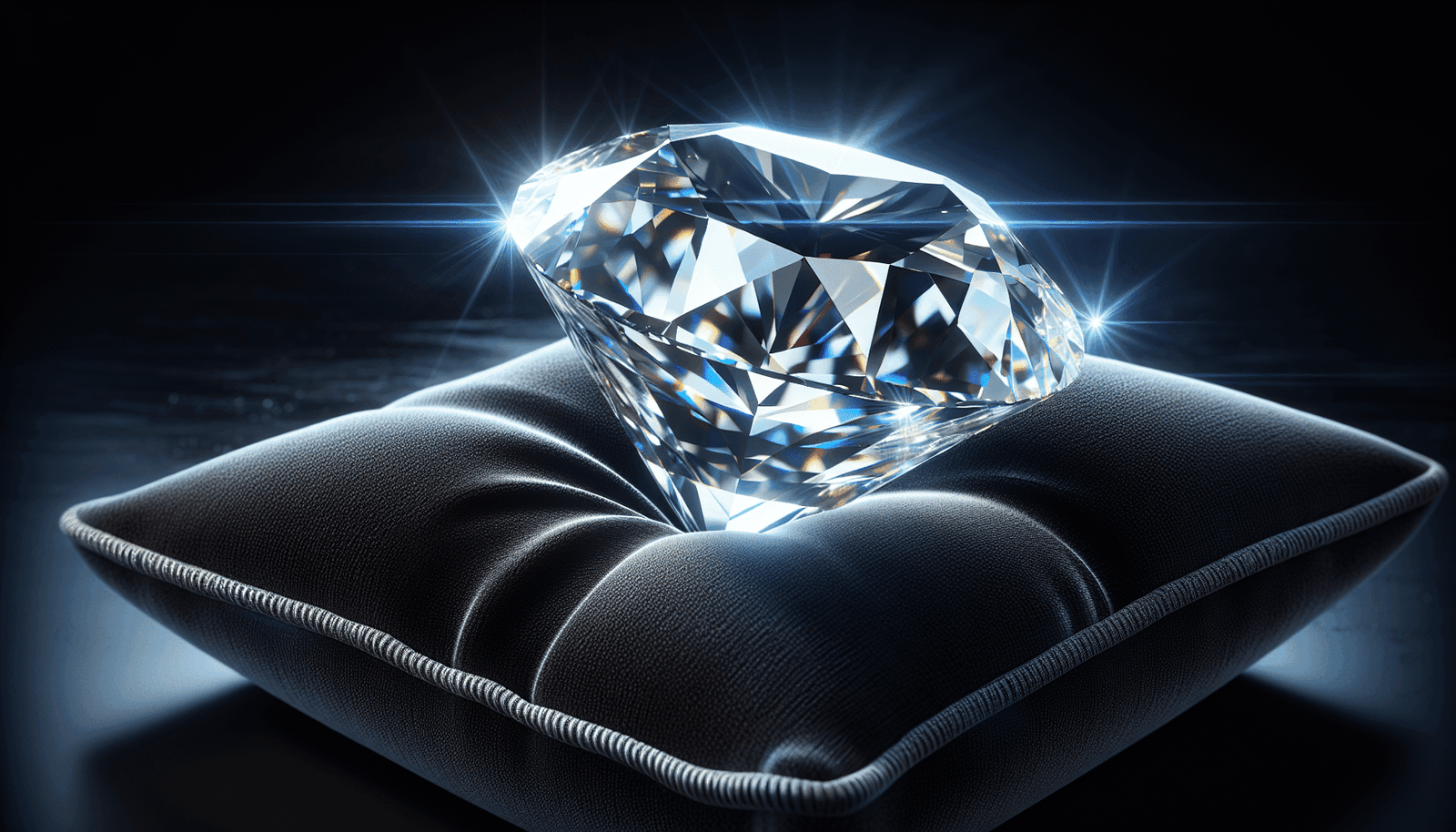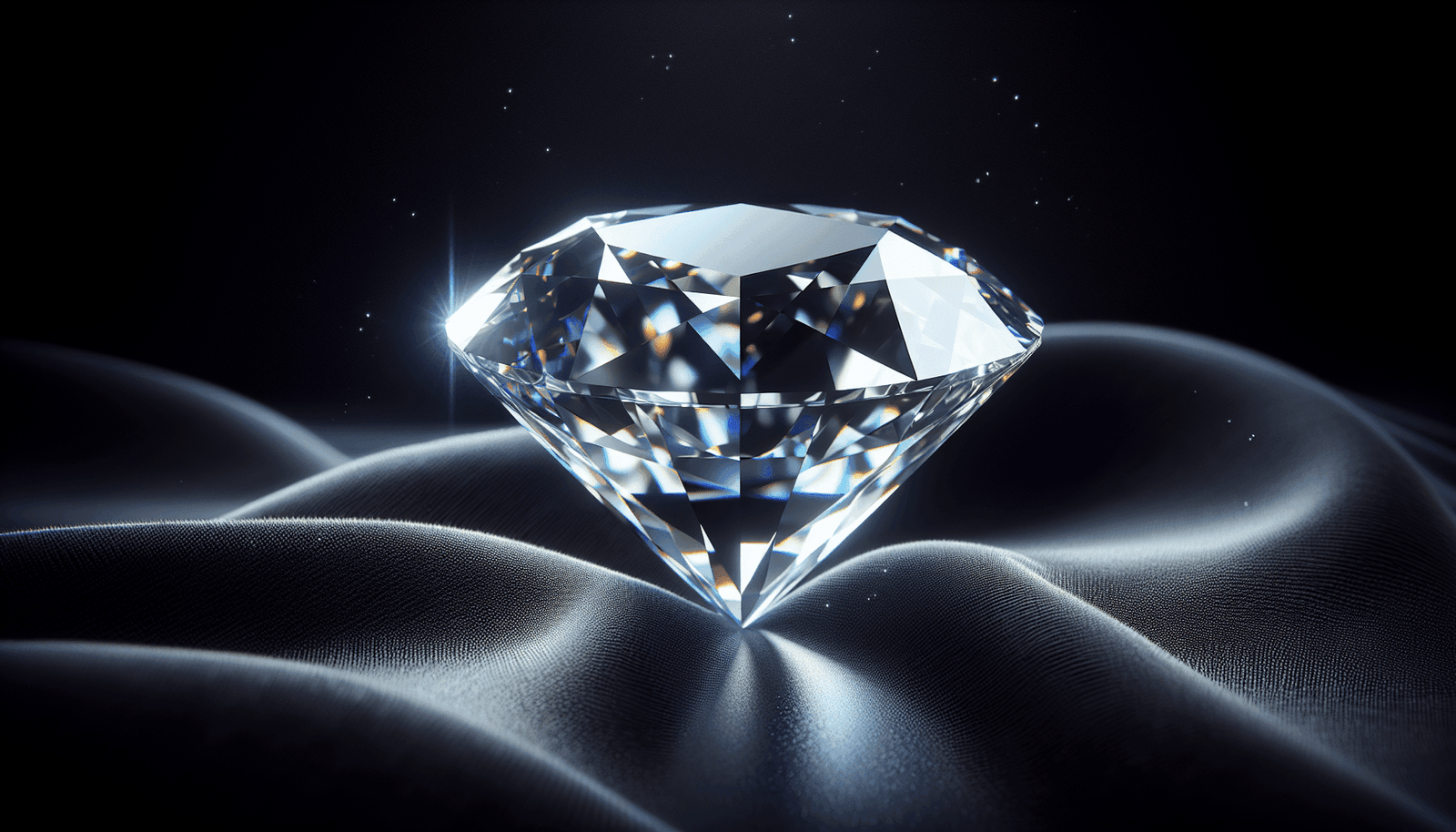Have you ever wondered what the purest form of diamond is? Well, you’re in for a treat because we are about to unravel the mysteries behind these sparkling gems. Diamonds, as you probably already know, are nothing short of fascinating. From their formation deep within the Earth’s mantle to their journey to the surface and eventual crafting into breathtaking pieces of jewelry, diamonds carry a story that spans millions of years.

What Constitutes a Pure Diamond?
Before diving deep into what makes a diamond the purest, let’s understand what purity in diamonds means. Essentially, when you think of purity in diamonds, you must consider two pivotal factors: clarity and color.
Clarity: The First Indicator of Purity
Clarity is a measure of the internal defects, or inclusions, and surface irregularities, called blemishes, of a diamond. In other words, it’s about how “clean” and “flawless” a diamond is under 10x magnification.
Diamonds are graded on a clarity scale, which ranges from Flawless (FL) to Included (I). Here’s a quick breakdown for you:
| Clarity Grade | Description |
|---|---|
| FL (Flawless) | No inclusions or blemishes visible under 10x magnification |
| IF (Internally Flawless) | No inclusions visible, only minor surface blemishes |
| VVS1, VVS2 (Very Very Slightly Included) | Minute inclusions that are difficult to see even under 10x magnification |
| VS1, VS2 (Very Slightly Included) | Minor inclusions observed with effort under 10x magnification |
| SI1, SI2 (Slightly Included) | Noticeable inclusions under 10x magnification |
| I1, I2, I3 (Included) | Obvious inclusions that may affect transparency and brilliance |
In essence, a Flawless (FL) diamond would stand as the highest marker of purity in terms of clarity. However, such diamonds are exceedingly rare and expensive. An Internally Flawless (IF) diamond can also be considered exceptionally pure, with only the most minute blemishes present.
Color: The Second Indicator of Purity
When we talk about the color of a diamond, it’s not really about the presence of color. Instead, it’s the absence of it that matters. Colorless diamonds are considered the purest because they exhibit no coloration, allowing the maximum resilience of light, which in turn produces sparkle and brilliance.
Diamonds are graded on a color scale from D (colorless) to Z (light yellow or brown), with D being the purest form. Here’s an easy-to-follow table for the color scale:
| Color Grade | Description |
|---|---|
| D | Absolutely colorless – the rarest and most valuable |
| E | Colorless – minute traces of color only detected by an expert gemologist |
| F | Colorless – slight color detected by an expert gemologist, still considered colorless |
| G-H | Near Colorless – Color noticeable when compared to diamonds of better grades |
| I-J | Near Colorless – Slightly noticeable color |
| K-M | Faint Yellow – Noticeable yellow tint |
| N-R | Very Light Yellow – More noticeable yellow or brown tint |
| S-Z | Light Yellow – Substantial color |
A pure D-grade diamond is as rare as it is mesmerizing, making it one of the most sought-after diamonds in the world.
Beyond the 4 Cs: Factors Affecting Purity
While clarity and color are crucial in determining the purity of a diamond, they aren’t the be-all and end-all. Other factors also play a vital role, such as a diamond’s cut and carat weight. However, these are not directly linked to purity but rather to the overall quality and appearance of the diamond.
The Cut: Bringing Out the Pure Sparkle
The cut of a diamond greatly affects its brilliance and sparkle. A well-cut diamond will reflect light internally from one facet to another and disperse it through the top of the diamond, enhancing its natural sparkle. A poorly cut diamond, on the other hand, will leak light through the sides and bottom, appearing dull.
An excellent cut can make even a lower clarity or color diamond appear more brilliant, while a poor cut can detract from the beauty of a higher clarity or color diamond.
Carat Weight: Size Doesn’t Define Purity
Carat weight refers to the actual weight of the diamond. One carat equals 200 milligrams. Although larger diamonds are rarer and can command higher prices, size is not a direct indicator of purity. You could have a large diamond with lower clarity and color grades and a smaller diamond with higher ones.

Type IIa Diamonds: The Pinnacle of Purity
So, taking all these factors into account, what is the purest form of diamond? The answer lies in Type IIa diamonds. These diamonds are often regarded as the most chemically pure diamonds due to their lack of nitrogen impurities.
Understanding Diamond Types
Diamonds are classified into different types based on the elements they’ve absorbed during their formation. The two main categories are Type I and Type II, which are further divided into subcategories.
| Diamond Type | Description |
|---|---|
| Type Ia | Contains nitrogen aggregates, most common type |
| Type Ib | Contains isolated nitrogen atoms, rare |
| Type IIa | Very little or no nitrogen, rarest and most valuable |
| Type IIb | Contains boron, can conduct electricity, very rare |
Type IIa diamonds are the purest in terms of composition. They contain no or negligible amounts of nitrogen and boast exceptional optical transparency. Found in only specific locations like South Africa, India, and Brazil, these diamonds account for less than 2% of gem-quality diamonds worldwide.
Characteristics of Type IIa Diamonds
Due to their extraordinary purity, Type IIa diamonds feature several intriguing characteristics:
- Exceptional Color: They often exhibit exceptional color, even among diamonds graded as colorless.
- Brilliant Clarity: They typically have fewer inclusions, enhancing their clarity.
- Unique Shapes and Sizes: Due to their pure carbon composition, they can form in unique shapes and possess greater structural integrity.
These characteristics make Type IIa diamonds the epitome of natural purity and beauty.
Famous Type IIa Diamonds: Legends of Purity
Some of the most famous and breathtaking diamonds in history are Type IIa. Their stories and settings have fascinated gem enthusiasts and historians alike.
The Cullinan Diamond
Discovered in South Africa in 1905, the Cullinan Diamond is the largest gem-quality rough diamond ever found, weighing 3,106 carats. It was cut into several well-known gems, including the Great Star of Africa (530.4 carats) and the Lesser Star of Africa (317.4 carats), both now part of the British Crown Jewels.
The Koh-i-Noor
Another legendary diamond, the Koh-i-Noor, is a 105.6-carat Type IIa diamond. Hailing from India, it has a storied history of ownership interwoven with power and conquest. Today, it is set in the Queen Mother’s Crown and displayed in the Tower of London.
The Elizabeth Taylor Diamond
Formerly known as the Krupp Diamond, this 33.19-carat Asscher-cut gem was renamed in honor of Elizabeth Taylor, who cherished it deeply. This Type IIa diamond is renowned for its impeccable clarity and color.

Natural Diamonds vs. Lab-Grown Diamonds
With advancements in technology, lab-grown diamonds have become increasingly prevalent. But how do these compare to natural diamonds, especially in terms of purity?
Natural Diamonds
Natural diamonds form deep within the Earth’s mantle under extreme conditions of high temperature and pressure over millions of years. They come to the surface through volcanic eruptions, making their journey and eventual discovery quite spectacular.
Lab-Grown Diamonds
Lab-grown diamonds, also known as synthetic diamonds, are created in controlled environments using two main methods: High Pressure, High Temperature (HPHT) and Chemical Vapor Deposition (CVD). While these diamonds share the same physical and chemical properties as natural diamonds, their creation process is much quicker, typically taking a few weeks.
Purity Comparison
Interestingly, lab-grown diamonds can be engineered to be Type IIa, thereby achieving similar purity levels to those rare natural diamonds. This makes them an appealing choice for those seeking high purity without the natural diamond price tag.
Ethical and Environmental Implications
As you consider the purity of diamonds, you might also ponder the ethical and environmental implications of your choice.
Natural Diamond Mining
Mining natural diamonds has historically been associated with several ethical issues, including labor exploitation and environmental degradation. Although the industry has made strides in adopting more ethical practices, problems still persist in some regions.
Lab-Grown Diamonds: A Cleaner Choice?
Lab-grown diamonds offer several ethical and environmental benefits. They generally have a smaller carbon footprint and avoid many of the ethically dubious practices associated with traditional mining. However, their production still consumes significant energy, so they are not wholly impact-free.
The Final Verdict: What Is The Purest Form Of Diamond?
To sum it all up, the purest form of diamond is a Type IIa diamond, which stands out due to its remarkable chemical purity and rare optical characteristics. Whether you choose a natural Type IIa diamond or a lab-grown equivalent, understanding what makes a diamond pure will undoubtedly add a layer of appreciation for these incredible gems.
The journey of a diamond—from its fiery birth deep within the Earth or its creation in a high-tech lab—to its final, polished form is nothing short of extraordinary. With this newfound knowledge, you’re now equipped to recognize and appreciate the unparalleled purity of these timeless treasures.



